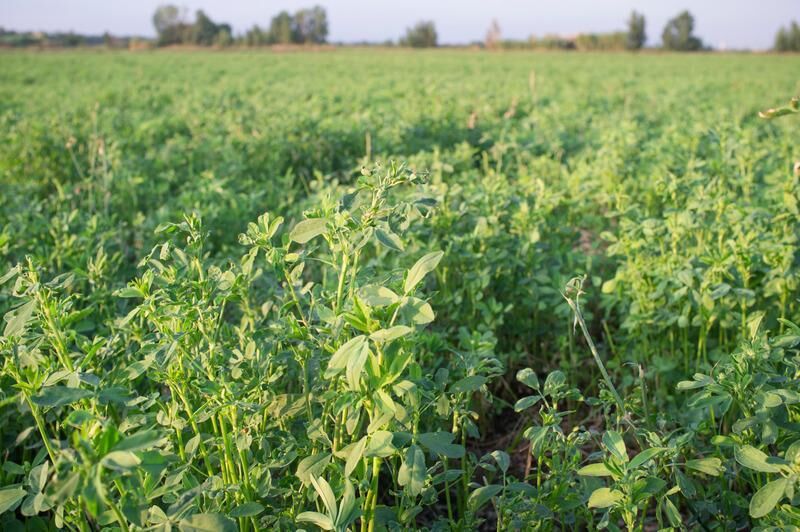Were you expecting more from last year’s alfalfa yields? Did your plants get enough time to winterize in the fall? Did this year’s open winter cause concern about winter kill? Evaluating your alfalfa stand in the spring is key to planning management and setting expectations for this year.
A hay square is a quick and easy way to begin evaluation. While we call it a hay square, square or circle shapes work equally well. A 17×17-inch square or 19-inch in diameter circle are the size we need.
Next, we need to determine what to count. There are two options when evaluating your stand: 1) by the number of plants per square foot (typically recommended for new stands, like plantings last fall) and 2) by the number of stems for established stands. Stem count more accurately predicts yield compared to plant number. However, either method will provide information for making management decisions.
Pick four to five random areas in your field to sample. Then count the plants or stems that would be harvested—typically anything over 6 inches—to determine your count. Then divide those numbers by two to get stems or plants per square foot. For established stands, having four to five healthy plants per square foot or 55 stems per square foot would warrant a productive and healthy stand. Stem counts below 55 see a significant decrease in dry matter production.
For stands planted last fall, you will see more plants per square foot compared to stems. Remember, a good rule of thumb is, for every pound of seed planted, expect three to five plants. New plantings that contain fewer than 12 plants per square foot may need to be reseeded.



